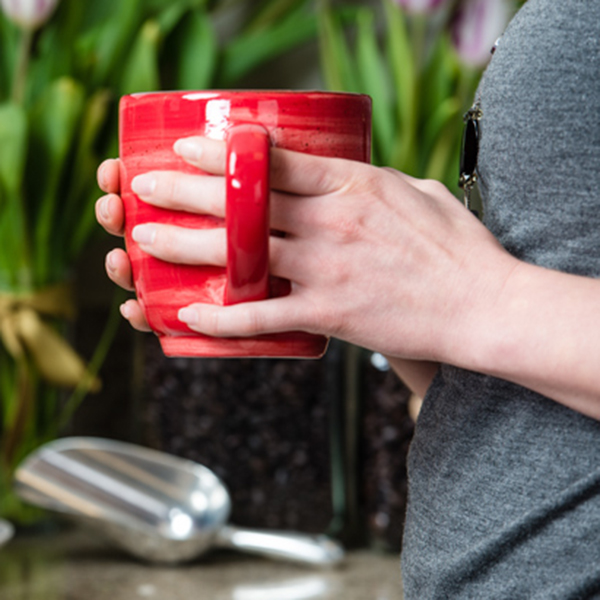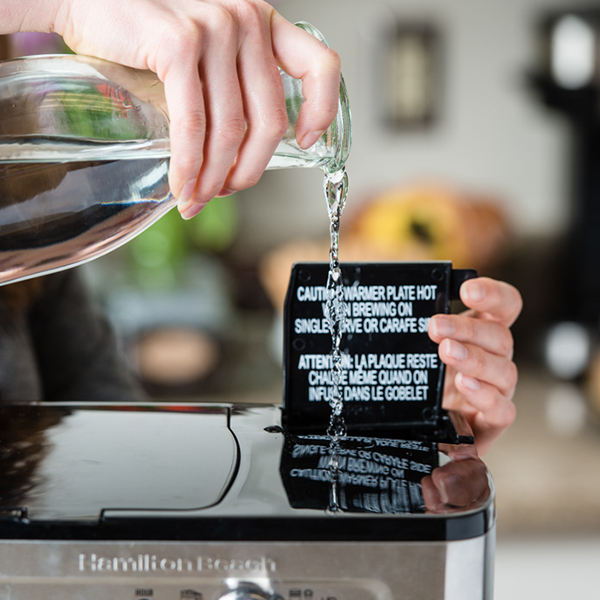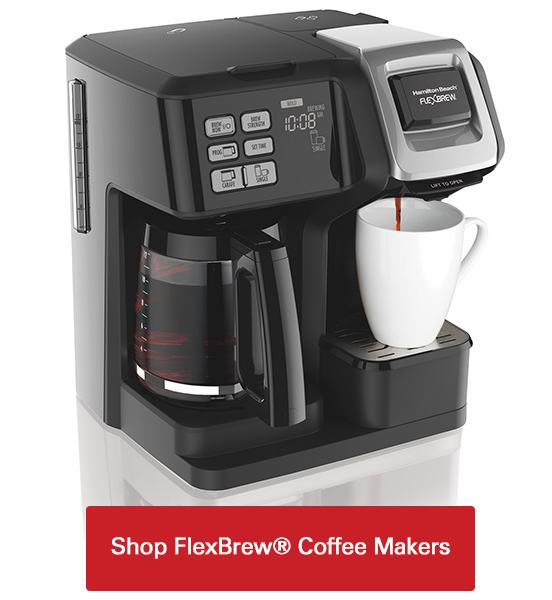 Has your coffee been a little lackluster lately? Don’t settle for subpar taste when you make coffee at home – correcting some common mistakes can turn your basic cup of joe into a cup of whoa. It’s easier than you think and requires no barista training. Check out our tips on how you can improve your coffee’s flavor by making some simple changes.
Has your coffee been a little lackluster lately? Don’t settle for subpar taste when you make coffee at home – correcting some common mistakes can turn your basic cup of joe into a cup of whoa. It’s easier than you think and requires no barista training. Check out our tips on how you can improve your coffee’s flavor by making some simple changes.
- Buying too much.
Buying in bulk can be a real money-saver, but if you’re not using it quick enough, it could be less than fresh. Coffee typically stays fresh for just about two weeks once it’s been opened. So for best result, only buy how much you’ll need for that timeframe.
- Measuring a cup of coffee as 8 ounces.
While the technical liquid measurement of a “cup” is 8 ounces, traditionally a cup of coffee is only 6 ounces, and the carafes on coffee makers are marked accordingly. The 6 ounces is based off the Old English teacup, which is still used in restaurants and coffee houses around the world as the standard measurement for a cup of coffee.
- Mismeasuring grounds.
 Let’s face it; if you make your coffee in the morning, you’re probably too tired to measure out the grounds. But if you add too much or too little, you could ruin your much-needed wake-me-up. Try to remember this: the basic ratio is 1-2 tablespoons of coffee grounds per cup (6 ounces) of coffee, and a typical coffee scooper is equal to about 2 tablespoons.
Let’s face it; if you make your coffee in the morning, you’re probably too tired to measure out the grounds. But if you add too much or too little, you could ruin your much-needed wake-me-up. Try to remember this: the basic ratio is 1-2 tablespoons of coffee grounds per cup (6 ounces) of coffee, and a typical coffee scooper is equal to about 2 tablespoons.
- Using water that isn’t cold enough.
Cold water is what makes a good cup of hot coffee. It absorbs fewer minerals on its way out the faucet. Plus, starting with cold water lets your coffee maker do its job of bringing the water to the ideal brewing temperature.
- Using the wrong filters.
Even if you’re using a filter that fits your coffee maker, it might not be fitting your preferred flavor. Paper filters can prevent bitterness because they trap more sediment. Plus, they work with any size grounds. On the flip side, permanent filters work best for coarser grounds and usually create a more full-bodied, bolder taste because it allows more oils to pass through.
- Only using pre-ground beans.

The flavor of brewing from a whole bean versus grounds is better, hands down. You’ll get more natural oils and flavors when you start with beans. If you’re going to give it a try, start with a bag of locally roasted beans – they’re probably going to be the freshest and most flavorful beans.
- Using the wrong grind size.
Most electric grinders come with a guide for what size to grind your beansto for the type of coffee you want. Be sure to follow it, and at the very least, keep this golden grinding rule in mind: the longer you brew, the coarser the grind.
- Coarse Grinds: For French press or cold brewing. Should be similar to kosher salt or table salt.
- Medium Grinds: For traditional automatic drips. The size should be between table salt and fine sand.
- Fine Grinds: For Espresso. The consistency should be similar to very fine sand.
 You might need to adjust the grind size if your flavor seems off. If it’s too weak, grind them finer. And if the flavor is too bitter or strong, make them a bit coarser the next time.
You might need to adjust the grind size if your flavor seems off. If it’s too weak, grind them finer. And if the flavor is too bitter or strong, make them a bit coarser the next time.
- Storing the coffee incorrectly.
If you have your coffee still in the packaging, or in a jar on display in a sunny spot, this might be affecting your flavors. The best way to store coffee is to take it out of the packaging and put it in an opaque container that’s airtight. Make sure the container is in a cool, dark spot.
- Putting coffee in the freezer.
The freezer is not an ideal home for coffee. While you might think you’re preserving the freshness, the cold environment is actually breaking down the oils that give coffee its aroma and flavor. Plus, coffee is porous, so it can absorb smells and tastes around it. Avoid coffee that tastes like the freezer, and store it at room temperature, like the tip above suggests.
- Using a dirty coffee maker.
 Coffee makers require cleaning just like any other small appliance. About every 30 days, make it a point to give it a good cleaning. Your coffee maker’s manual should have a how-to, but you can also start with these tips on cleaning a coffee maker.
Coffee makers require cleaning just like any other small appliance. About every 30 days, make it a point to give it a good cleaning. Your coffee maker’s manual should have a how-to, but you can also start with these tips on cleaning a coffee maker.
Try a few of these adjustments to your coffee making techniques today and taste the difference. Whether you have a single-serve brewer or a 12-cup automatic drip, these brewing best practices can be applied.

Additional Coffee Maker Tips & Techniques


 Has your coffee been a little lackluster lately? Don’t settle for subpar taste when you make coffee at home – correcting some common mistakes can turn your basic cup of joe into a cup of whoa. It’s easier than you think and requires no barista training. Check out our tips on how you can improve your coffee’s flavor by making some simple changes.
Has your coffee been a little lackluster lately? Don’t settle for subpar taste when you make coffee at home – correcting some common mistakes can turn your basic cup of joe into a cup of whoa. It’s easier than you think and requires no barista training. Check out our tips on how you can improve your coffee’s flavor by making some simple changes. Let’s face it; if you make your coffee in the morning, you’re probably too tired to measure out the grounds. But if you add too much or too little, you could ruin your much-needed wake-me-up. Try to remember this: the basic ratio is 1-2 tablespoons of coffee grounds per cup (6 ounces) of coffee, and a typical coffee scooper is equal to about 2 tablespoons.
Let’s face it; if you make your coffee in the morning, you’re probably too tired to measure out the grounds. But if you add too much or too little, you could ruin your much-needed wake-me-up. Try to remember this: the basic ratio is 1-2 tablespoons of coffee grounds per cup (6 ounces) of coffee, and a typical coffee scooper is equal to about 2 tablespoons.
 You might need to adjust the grind size if your flavor seems off. If it’s too weak, grind them finer. And if the flavor is too bitter or strong, make them a bit coarser the next time.
You might need to adjust the grind size if your flavor seems off. If it’s too weak, grind them finer. And if the flavor is too bitter or strong, make them a bit coarser the next time. Coffee makers require cleaning just like any other small appliance. About every 30 days, make it a point to give it a good cleaning. Your coffee maker’s manual should have a how-to, but you can also start with these tips on cleaning a coffee maker.
Coffee makers require cleaning just like any other small appliance. About every 30 days, make it a point to give it a good cleaning. Your coffee maker’s manual should have a how-to, but you can also start with these tips on cleaning a coffee maker.